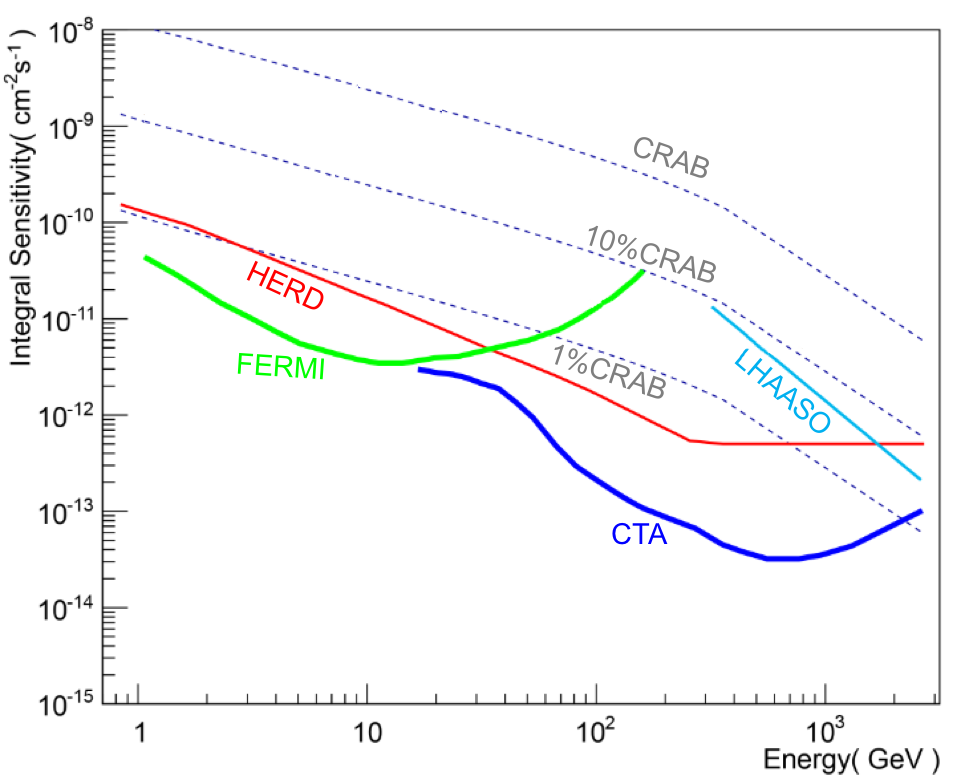Gamma ray observation
The observations in the energy range above 1 GeV by HERD will play a unique and complementary role in multi-wavelength studies across the electromagnetic spec- trum with other space and ground telescopes. The connection between HERD and the Cherenkov Telescope Array (CTA) is extremely useful. CTA aims to provide energy coverage from some tens of GeV to 100 TeV. The Large High Altitude Air Shower Ob- servatory (LHAASO) will in addition extend the monitored energy range up to 1 PeV. The synergy among HERD, CTA and LHAASO will allow simultaneous coverage of the same sources from few GeV to 1 PeV with substantial overlap of measured spectra. Com- plementary observations with HERD, CTA and LHAASO will also contribute notably to transient science, which is crucial to study for the properties of jets, and can shed light on determining the extragalactic background light, intergalactic magnetic fields, and the validity of the Lorentz invariance.
HERD with its unusually large field of view and unique energy coverage is well suited to the search of electromagnetic counterpart of gravitational wave events. High- energy neutrino astronomy is also a promising research field entering a new stage in which a discovery of neutrino source might be finally possible with IceCube, and will be further improved with IceCube-Gen2.
In the next a few years, GECAM, SVOM, EP, LSST, and Euclid etc. will provide almost all-sky coverage and are efficient transient factories. The synchrotron radio emission (10 MHz – 1 GHz), observed in the current (MWA, LOFAR) or future (SKA) radio surveys, can be used to constrain the spectrum of cosmic-ray electrons with energies of a few GeV. HERD observations of the electron bremsstrahlung emission will complement this spectrum above ≈ 1 GeV.
The following figure shows the simulated HERD sensitivity for 1 year observation. In order to compare the potential for gamma ray science by HERD the sensitivities of other experiments are also shown. We can see that HERD is the most sensitive instrument for gamma rays from tens to hundreds of GeV with wide field of view. Such performance guarantees its importance for monitoring and searching for the gamma ray sources discussed above.
